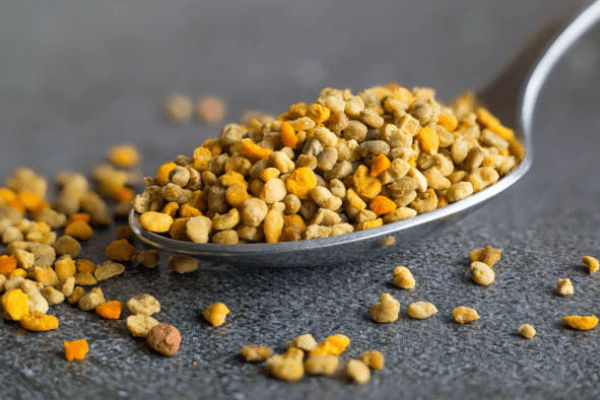Healthy food >>>> How to use flower pollen?
How to use flower pollen?

It is known that the source of honey is flower pollen, which is fermented by bees and turns into honey with its recognized nutritional and medicinal properties. Naturally, questions arise as to whether it is possible to use unfermented flower pollen for the same purposes, and how to use flower pollen, if possible?
Flower pollen of plants is microscopic male reproductive cells, which when it matures are carried by wind or insects and in this way get on the stigmas of pistils of flowers of female plants. Flower pollen is a combination of many organic substances, which are extremely unstable. To preserve pollen, bees fill it with honey. This is how bees Perga is formed, which in the hive is a preserved product of future processing into honey. Flower pollen that is not preserved by bees contains a lot of moisture, which promotes the growth of mold and other chemical transformations that provoke the destruction of organic substances, making pollen and, accordingly, honey a unique and valuable food and medicinal product.
There are ways to preserve flower pollen at home, similar to how bees do it. For these purposes, mix 2.6 ounces of honey with 4.4 ounces of water and bring to 104 degrees Fahrenheit (forty degrees Celsius) so that the honey does not spoil when overheated. Then add 1.8 ounces of dry pollen to the resulting honey solution, mix thoroughly and pour into hermetically sealed jars (or fill with a layer of beeswax), which must be stored in a cool, dry and dark place.
There is a method for storing flower pollen in dry form, for which it is dried (dehydrated) in a dark dry place. It is placed in a hermetically sealed container and stored in a dark place at zero temperature.
You can mix dried (dehydrated) pollen with candied honey (not liquid) in a ratio of one to two or one to one. This mixture is also stored in a hermetically sealed container in a dark, dry and cool place.

The pharmaceutical industry produces tablets, granules or extracts with flower pollen. Industrially preserved flower pollen has many nutritional advantages over home-preserved flower pollen.
The chemical composition of flower pollen depends on the type of plant from whose flowers the pollen was collected. Flower pollen may contain depending on this:
- protein compounds in the range from 7 to 30 percent; fatty substances - from 1 to 11 percent;
- sugar – from 20 to 40 percent;
- amino acids and minerals (magnesium, manganese, sulfur, zinc, sodium, iron, calcium, phosphorus, chromium and others);
- B vitamins, vitamin PP , pantothenic, folic and ascorbic acid, vitamins E and D, carotene;
- the pollen of some plants, such as Buckwheat, may contain large amounts of Rutin.
It is worth keeping in mind that fresh and bee-fermented flower pollen have different nutritional and medicinal properties, since fermentation is a chemical process of converting some substances into other substances. But the chemical composition of flower pollen as a raw material is also useful in nutrition, like fruits, berries, vegetables and green food plants.
Flower pollen is used in the preparation of vitamin-enriched drinks, teas, and added to food (for example, to salads). It is not recommended to subject flower pollen to heat treatment, as it loses its beneficial properties. And it is necessary to know that flower pollen and preparations from it cannot fully replace such a product as honey.

Read

Read



























